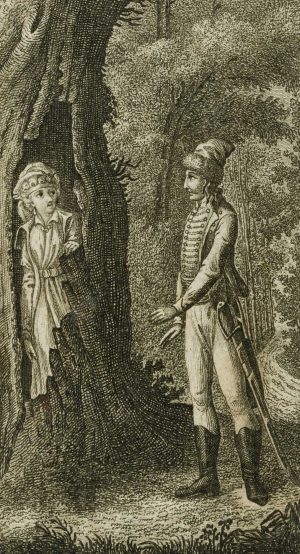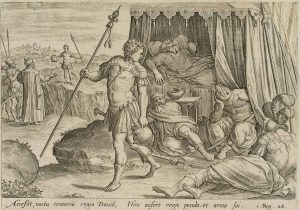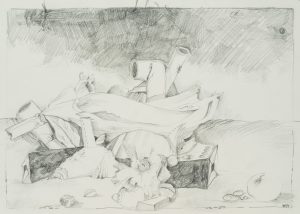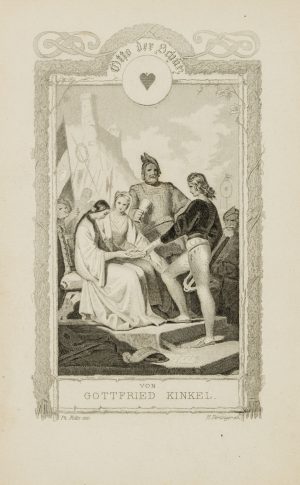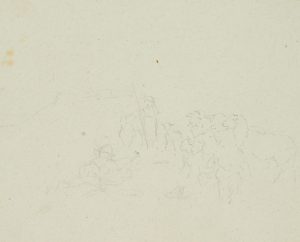Unbekannt (19. Jahrhundert), Ansicht der Milvischen Brücke bei Rom, um 1870, Bleistift
- Technik: Bleistift auf Papier
- Bezeichnung: Unten in Bleistift bezeichnet mit: „Ponte Molle Rom“.
- Datierung: um 1870
- Beschreibung: auf Papier montiert Skizzenhafte Landschaftsdarstellung in der Campagna Romana aus dem Skizzenbuch eines anonymen Künstlers. Mit schnellen Strichen zeichnete der Künstler den Blick über den gewundenen Tiber und die umgebenden Hügel nahe Roms. Zentral sind die sechs aus römischen Ziegeln bestehenden Bögen der berühmten Milvischen Brücke zu sehen. Das antike Bauwerk, das 109 v. Chr. fertiggestellt wurde, war im Laufe der Geschichte Schauplatz vieler Auseinandersetzungen von denen die Schlacht an der Milvischen Brücke die wohl bekannteste ist. Im Jahre 312 n.Chr. besiegte Kaiser Konstantin der Große seinen Gegner Maxentius in dieser Schlacht. Der Überlieferung nach erschien ihm zuvor eine Vision, die ihm den Sieg unter dem christlichen Zeichen des Kreuzes ankündigte, sodass der Triumph als Endpunkt der Christenverfolgung im römischen Reich gilt.
- Schlagworte: Rom, Landschaft, Deutschland, Romantik, 1850-1899
- Größe: 9,8 cm x 19,9 cm
- Zustand: Guter Zustand. Leicht fleckig und altersbedingt verfärbt.
English Version:
Unknown (19th century), View of the Milvian Bridge near Rome, c. 1870, Pencil
- Technique: Pencil on Paper
- Inscription: Inscribed in pencil at the bottom: „Ponte Molle Rom“.
- Date: c. 1870
- Description: mounted on paper Sketchy landscape depiction in the Campagna Romana from the sketchbook of an anonymous artist. With quick strokes the artist drew the view over the winding Tiber and the surrounding hills near Rome. Centrally, the six Roman brick arches of the famous Milvian Bridge can be seen. The ancient structure, completed in 109 BC, has been the scene of many conflicts throughout history, of which the Battle of the Milvian Bridge is probably the most famous. In 312 AD, Emperor Constantine the Great defeated his opponent Maxentius in this battle. According to tradition, a vision appeared to him beforehand, announcing victory under the Christian sign of the cross, so that the triumph is considered the end point of the persecution of Christians in the Roman Empire.
- Keywords: Rom, 19th century, Romanticism, Landscapes, Germany,
- Size: 9,8 cm x 19,9 cm (3,9 x 7,8 in)
- Condition: Good condition. Slightly stained and discoloured due to age.











